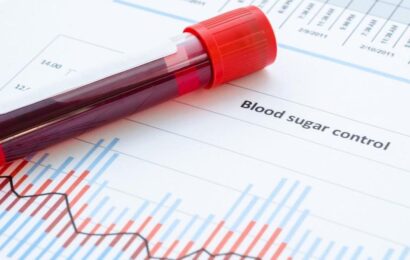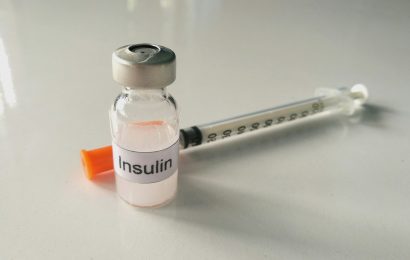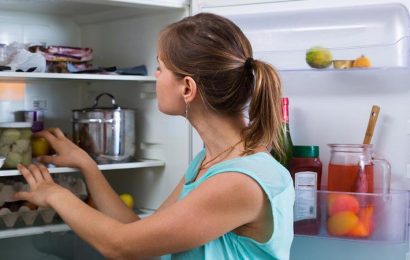If any of the nonnutritive sweeteners have taken the sweetener world by storm, it would have to be the newer stevia-based sweeteners. Food manufacturers love them because they can tout them as being “all natural.” Consumers (at least many of them) love them, too, because, well, they’re seemingly “all natural” and not full of those nasty chemicals, like aspartame, saccharin, and sucralose. How good are these sweeteners? Are they all they’re hyped up to be?
What is stevia leaf extract?
The stevia plant belongs to the Asteraceae family and is a cousin of daisies and ragweed. As with many plants, there are different species; the species of stevia that is used to sweeten food (and that’s also been used medicinally for hundreds of years) is called Stevia rebaudiana. It’s native to South America, but it’s also grown in Asia.
Stevia gets its sweetness from two chemicals: stevioside and rebaudioside A. While stevia has been sold for years in health-food stores (and you can buy stevia plants, too), the FDA rejected the use of stevia in foods back in the 1990s; Canada and a European scientific panel likewise rejected its use. Stevia could only be sold as a dietary supplement, not as a sweetener. Why? According to the Center for Science in the Public Interest (CSPI), the consumer watchdog group that I’ve mentioned previously, high doses of stevia given to rats lowered their sperm count and increased cell proliferation in their testicles; this could lead to infertility. Also, pregnant hamsters who were fed a stevia derivative called steviol had fewer and smaller offspring. And in the lab, steviol can be converted into a mutagenic compound, which could promote cancer.
The “stevia” that you see today on the grocery shelves contains a leaf extract of the stevia plant called rebaudioside A (also known as reb A or rebiana). Two companies, Cargill and Merisant, developed this stevia extract and in 2008, petitioned the FDA to give it GRAS (generally recognized as safe) status. The FDA agreed, and shortly thereafter, companies started to market rebiana-sweetened products. To clarify, sweeteners containing rebiana contain an extract of the stevia leaf; whole-leaf stevia has not been granted GRAS status or approved by the FDA as a sweetener.
Rebiana is about 200–400 times sweeter than regular sugar. Currently, it’s used in tabletop sweeteners, in beverages, and in many food products, as well. One packet of a stevia-based sweetener contains about 0–1 calorie, and roughly 1–4 grams of carb, depending on the brand. Some top brands of stevia-based sweeteners contain erythritol, a sugar alcohol, or dextrose, a type of sugar. These are added to provide bulk and texture. Stevia-based sweeteners are suitable for cooking and baking, but can’t completely replace sugar in a recipe; for this reason, several of these companies manufacture “blends” of the sweetener along with sugar.
What are the concerns about consuming stevia leaf extract?
The appeal of these stevia-based sweeteners, as I mentioned previously, is that they’re derived from a plant, not concocted in a lab. But to say that these sweeteners are completely natural or unprocessed isn’t quite accurate, as the rebiana is extracted from the stevia leaf using chemicals. CSPI believes that rebiana’s GRAS status was granted prematurely by the FDA; they don’t state specific side effects or health concerns from using it, but point out that the FDA didn’t mandate that the extract be tested in both rats and mice prior to approval (which is the norm).
Unlike monk fruit extract, stevia leaf extract has been studied and no significant adverse effects have been reported. There’s always the risk of an allergic reaction, but that’s likely rare. And there have been some reports of stevia sweeteners causing bloating, nausea, and diarrhea. Some forms of stevia extract have been shown to lower blood sugar levels in rats, but not the extract found in stevia-based sweeteners. Finally, these stevia-based sweeteners may leave an aftertaste or taste bitter to some people. Beverage makers have introduced sodas containing stevia leaf extract, but consumers aren’t taking to them, complaining about the bitter flavor.
How much stevia leaf extract is safe to use?
The ADI (acceptable daily intake) of stevia leaf extract is 4 milligrams per kilogram of body weight per day, expressed as steviol equivalents; this is equal to 12 milligrams per kilogram of body weight per day of steviol glycosides, which is what rebiana is. Translated, this means that a 150-pound person can safely consume 816 milligrams of stevia leaf extract every day for his lifetime without any adverse effects. That’s equivalent to consuming roughly 40 packets of tabletop stevia sweetener per day.





